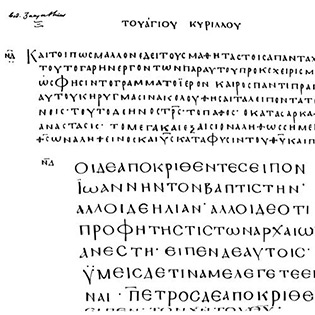
The Institute for Textual Scholarship and Electronic Editing (ITSEE) has been awarded a £400k grant to fund a project to bring to life the Codex Zacynthius, the oldest manuscript of the Greek New Testament to contain a commentary in the form of extracts from early Christian theologians.
The grant has come from the Arts and Humanities Research Council. The two-year project will be a joint one with Cambridge University Library, which owns the manuscript, and it will start in February 2018.
The manuscript was copied around the year 700, and contains the Gospel of Luke, with the extracts written in the three outer margins of each page. However, the commentary was considered to be lost forever as much of it was erased when the manuscript was dismembered in the thirteenth century to create a lectionary manuscript of the Gospels.
A technique called Multispectral Imaging will be used to create digital images of the erased text. These images will then be used to make the first complete transcriptions of the manuscript and the commentary. The commentary will then be translated into English. Multispectral Imaging has been used for similar projects before, including deciphering charred scrolls from Herculaneum.
The electronic versions of the text and images that the project creates will be published on the Internet. The research team, led by the Director of ITSEE, Professor David Parker, will also study the commentary and write the first complete account of the way in which they were put together. This will in turn inform discussions about their place in the wider picture of biblical study and early medieval Christianity.